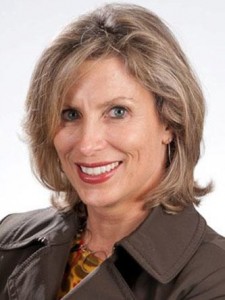As a part of our talent acquisition engagements, we ask our clients how they define “top talent” and how they would assess those traits in the interview process. Reflecting on the insightful comments we hear every day, we thought there would be great value in a new blog in which senior executives/thought leaders share their “Take on Talent.”
This is the eighth in a series of blogs/interviews with senior executives who are thought leaders in the areas of Talent Acquisition, Career Development and Leadership who will share their perspectives on this ever present question.
 Tracy Mendez is the Senior VP & GM in Global Accounts, covering the Industrial & Retail Sectors at Xerox. She leads a team of Managing Directors responsible for delivering revenue / OP growth through the full portfolio solutions (BPO and Document Outsourcing) to Xerox’s marquis clients. The evolved sales and operations model supports strategic client partnerships focused on solving industry challenges. Tracy’s consistent record of driving revenue growth and improving profitability is underpinned by an approach that incorporates innovation & transformation.
Tracy Mendez is the Senior VP & GM in Global Accounts, covering the Industrial & Retail Sectors at Xerox. She leads a team of Managing Directors responsible for delivering revenue / OP growth through the full portfolio solutions (BPO and Document Outsourcing) to Xerox’s marquis clients. The evolved sales and operations model supports strategic client partnerships focused on solving industry challenges. Tracy’s consistent record of driving revenue growth and improving profitability is underpinned by an approach that incorporates innovation & transformation.
Prior to this role, Tracy designed and implemented standardized Strategic Pursuit Centers worldwide. Her international experience is derived from running Major accounts Xerox Global Services in Developing Markets, driving 45% growth to $415M.
Please share with us the top five characteristics (in priority order, first to fifth) of the most talented people you have encountered during your career, and your definition of each.
LEADERSHIP
As trite as it sounds, the most talented people always seem to be the best leaders too. So what does leadership look like? An individual who commands your attention from the moment they begin interacting with you. Their engaging, competent aura — whether energetic, or controlled calm — is present regardless of their seniority or lack thereof. The team immediately senses this person will contribute significant value to any project with which they are involved. Their presence and ‘thought leadership’ drives influence, spirited teamwork and a keen pursuit of decisive, accountable action from all involved.
COMPETENCE
Competence is a fundamental piece of the ‘talent’ equation. A talented person seeks to: 1) deeply understand the challenge; 2) frame the work effort required for the desired outcomes; and 3) bring the tools / requisite skills the job will call upon. Valuable experience brings with it a history of lessons learned mixed with the ability to extract meaningful trends / elements and then translates those to evolving business landscapes. Mastery of the requisite tools and methodologies are critical to the assessment of a situation in an uncharted territory. This is especially true in today’s evolving digital, mobile and global world.
EMOTIONAL MATURITY
It goes without saying, but ‘EM’ should shadow or complement competence. With the emergence of new technologies and new business models, expertise or competence can be a fleeting quality. It requires a confident but respectful approach to assessing evolving environments and admitting that outcomes might not be predictable. EM demands the agility to be open to assessing off-target decisions and the rapid reversal of those decisions when assumptions are incorrect or simply don’t play out in today’s extremely fast-paced milieu.
CURIOSITY (BEST PATH TO CREATIVITY)
Status quo is an organization’s death warrant. Talent ferments, financials stagnate, and the competitive edge melts to deliver an irrelevant value proposition. Our clients demand continuous improvement in both productivity and innovation. Delivering continuous improvement demands curiosity of key processes and applicable technologies with an intent to transform. Looking for talent that understands new technology in the realm of IoT (Internet of Things), process improvement (RPA -robotic process automation) and business model re-visioning is important. However, it is creativity that will link new technology and business models to dynamic new value propositions. What is needed is talent born with an unwavering interest to continually digest this evolving world, synthesize a specific call to action and lead the charge for institutional change.
EFFECTIVE COMMUNICATION
Talented people understand that transparent communication is effective communication. They demand visibility and engagement. A corporate culture steeped in effective communication and transparency is paramount to them. Cultures that embody transparency have well communicated, aligned goals underpinned by organizational collaboration. These are fulfilling environments within which to work. This philosophy is fundamental in attracting today’s best and brightness talent.
Yves Moriex’s Ted Talk may have said it best:
How Too Many Rules at Work Keep You From Getting Things Done
In review, the recipe for today’s talent starts with personal leadership underpinned with the hard skills embedded in competency and the soft skills of EM and effective communication. Together, these elements yield an institutional platform for creativity unleashing a whole greater than its sums, unanimously committed to joint success. More importantly, this talent profile will not stand still. This type of talent will pursue and harness the quantum opportunities our world has to offer.
How do you communicate these characteristics to your HR and senior management team?
These participants (HR and senior management) are not two separate entities. Senior management, including HR, must be aligned around and impassioned by the fundamental concept that talent is as important as any business offering. Together they must create a cross-functional environment that fosters collaborative success rather than individual performance. And finally, once that environment is created, the talent then continues to refine the team through self selection – they pick like-minded people – and the process evolves into part of the entity’s culture.
How do you handle challenges to the existing culture by talent you have brought in?
Crisp, inclusive communication to all employees about the organization’s strategy driving talent choices is imperative. In most cases, organizations have a very good pulse on what is needed to succeed in today’s uber competitive environment, and eagerly embrace well-thought-through strategic changes. When individuals resist, tools for self-assessment against new expectations will allow for introspection and self selection. As necessary, management must be willing to deploy tough talent re-alignment or smaller nimble adjustments to validate the message.




